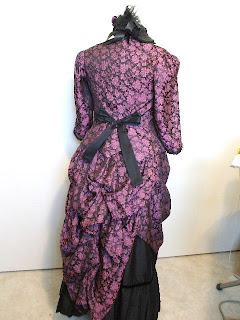After a little more thinking, I decided to make one for each of the 12 ladies attending the event. So I started at Michael’s Craft Store to look for some cameo brooches. They sell them individually for about $3 but with a coupon, can be half price. I couldn’t find a photo of the exact brooch I bought but here are some in a set on their website.

There’s usually some kind of ceramic design in the middle that you use as the base for your portrait. They come in a couple different shapes too.
So then I did a search for “Victorian portraits”, and came up with a link to some being sold on ebay. Most were cabinet portraits, and some were actual brooches for sale. I copied and saved a bunch of them that looked good, and in focus.


I made a Word Document by Inserting each portrait on the page, and shrinking it down to a size that looked like the face area would fit onto the brooch.
I made a template from the center stone of the brooches with paper, and laid it on top of each portrait to include the areas I wanted to keep on the brooch. Using a stiff vinyl or plastic template may give you a better view of the portrait before you cut it. But I didn’t have any problem doing it this way.
I used some black Americana tole paint and rubbed some of it with a paper towel along the edges of the silver brooch to age it.
Then I brushed some Modge Podge (a decoupage paste purchased at Michael’s) on the face of the cameo with my finger. I laid the cut portrait on top of it and tapped it down with a clean finger. Again using my finger, I put more Modge Podge over the top of the portrait, making sure it was all covered and wet. It looks pretty white but it will dry clear. This acts as a glue and a sealant. Nothing else is needed to finish it.
Most of the brooches had a loop for hanging it on a chain; some didn’t but had a loop as part of the frame. I wanted to make these a pinned on brooch, so I tied a narrow black velvet ribbon to each one, and at this time put a safety pin on the ribbon so the ladies could pin it to their blouses. Another option would be to glue a pin back on the back of the brooch.
This is the one I made for me.

These are the ones I made for the other ladies, and you can see the variety of shapes and designs they came in.

Here are two of us wearing our brooches in our mourning outfits.


.jpg)




















